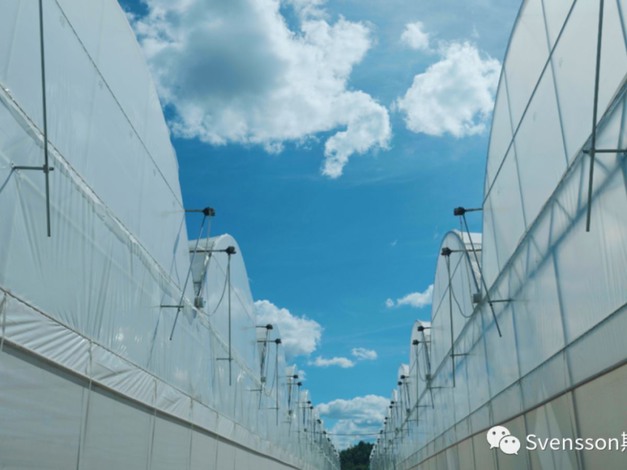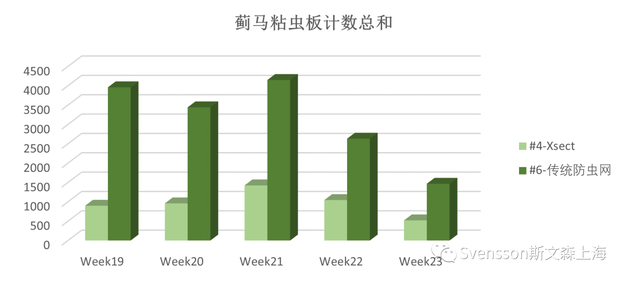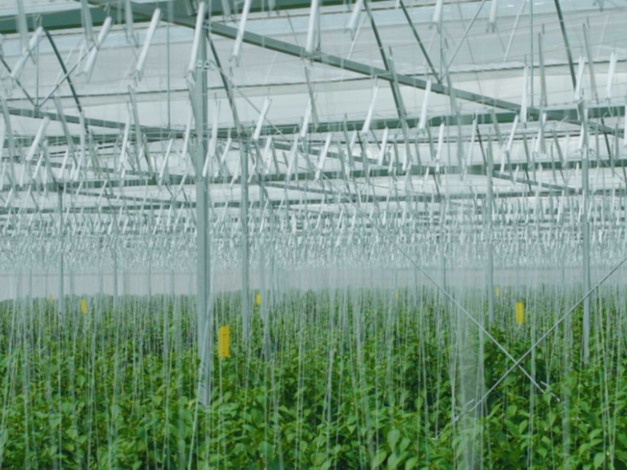"We hope to find an insect-proof screen that is more effective in preventing and controlling thrips." Han Mingjun, a post-95 new farmer, told us about his needs when designing and building a new bell pepper greenhouse in 2022. According to experience in pepper planting, thrips prevention, and control has always been the most challenging part of the entire planting process. After communicating with Svensson, Han decided to try Xsect Xtra, Svensson's insect screen, because the effect has received good feedback from pepper growers in Mexico, Spain, and other places.

The new bell pepper greenhouse is located on Yuxi Rongrong Farm. The Xsect Xtra screen is installed on the side wall of the No. 4 plastic multi-span greenhouse. It is compared with another No. 6 Greenhouse with a similar area and installed a traditional insect-proof screen. The experiments focused on changes in thrips populations in the greenhouses and monitoring of thrips-related plant diseases. Through the weekly collection of relevant data and comparative analysis, the advantages of Xsect Xtra in thrips control have been effectively confirmed.
Test results
Thrips populations
Each row in the No. 4 and No. 6 greenhouses is evenly placed with 3 yellow traps. In addition to reading the number of thrips every week, we can also reflect on the distribution of thrips. The beginning of May coincided with the dry season in Yuxi. The hot and drier climate and the agricultural operations in the surrounding farmland and corn fields led to the emergence of a large number of exogenous thrips. The data shown in Figure 1 starts from the 19th week. By accumulating the total number of thrips on both sides of 42 yellow traps in each greenhouse, we can see that the number of thrips in the No. 4 Greenhouse using the Xsect insect screen is significantly lower than that in the No. 6 Greenhouse. The average is about 25-30% of the No. 6 Greenhouse. After 21 weeks of biological control treatment in the two greenhouses, the number of thrips in the No. 4 and No. 6 Greenhouses showed a downward trend after feeding predatory mites, and the number of thrips in the No. 4 Greenhouse still maintained a very low level.
 Figure 1. Comparison of thrips populations in No. 4 and No. 6 Greenhouses
Figure 1. Comparison of thrips populations in No. 4 and No. 6 Greenhouses
Thrips Distribution
There are two kinds of thrips in greenhouses: exogenous and endogenous. The exogenous thrips mainly enter the greenhouses through the insect-proof screen of the side wall or the entrance and exit in the greenhouses. They are generally adults and have a darker color; while endogenous refers to the thrips produced by reproduction. The natural enemies used for biological control mainly control the population in the greenhouses by preying on the eggs of thrips. During the counting, we found that the thrips on the traps were mainly dark, especially in Greenhouse No. 6, where most of the thrips in the greenhouse were exogenous. In addition, by observing the distribution (Figure 2), we found that the average number of thrips reached 200-250 on the yellow trap near the side wall of No.6 Greenhouse. However, the number of thrips in the same location in No. 4 Greenhouse was less than 50. This difference in number distribution also confirms that the Xsect insect screen has a very obvious insect control effect on exogenous thrips.
 Figure 2. Comparison of thrips distribution in No. 4 and No. 6 Greenhouses
Figure 2. Comparison of thrips distribution in No. 4 and No. 6 Greenhouses
Plant diseases
In addition to thrips counts, plants were also sampled for the occurrence of thrips on flowers. The probability of occurrence of thrips on flowers was positively correlated with the number of thrips on the traps. More importantly, the number of plants infected by the TSWV virus caused by thrips is also closely related to the number and distribution of thrips. As of the 29th week, the cumulative number of infected plants in No. 6 Greenhouse was 19% more than that of No. 4 Greenhouse, and most of them were distributed near the side walls.
During 10 consecutive weeks of monitoring, the number of thrips was always at a low level in No. 4 Greenhouse, where Xsect insect screens were used. By using Xsect insect screens to reduce the invasion of exogenous thrips, combined with biological control in the greenhouses, we can effectively control the number of thrips and reduce the occurrence of diseases.

Greenhouse climate
Thanks to the unique process, the 3D mesh of Xsect can effectively trap pests while maintaining good ventilation performance. During the experiment, the temperature and humidity in the greenhouse under different weather conditions were monitored, and the conditions of the two greenhouses were similar.
Seeing is believing, through data comparison, Han is satisfied with the effect of Xsect insect screens. We have reason to believe that growers who have higher needs for pest control can try Xsect insect screens to achieve their goals!
Gloria Zhang
